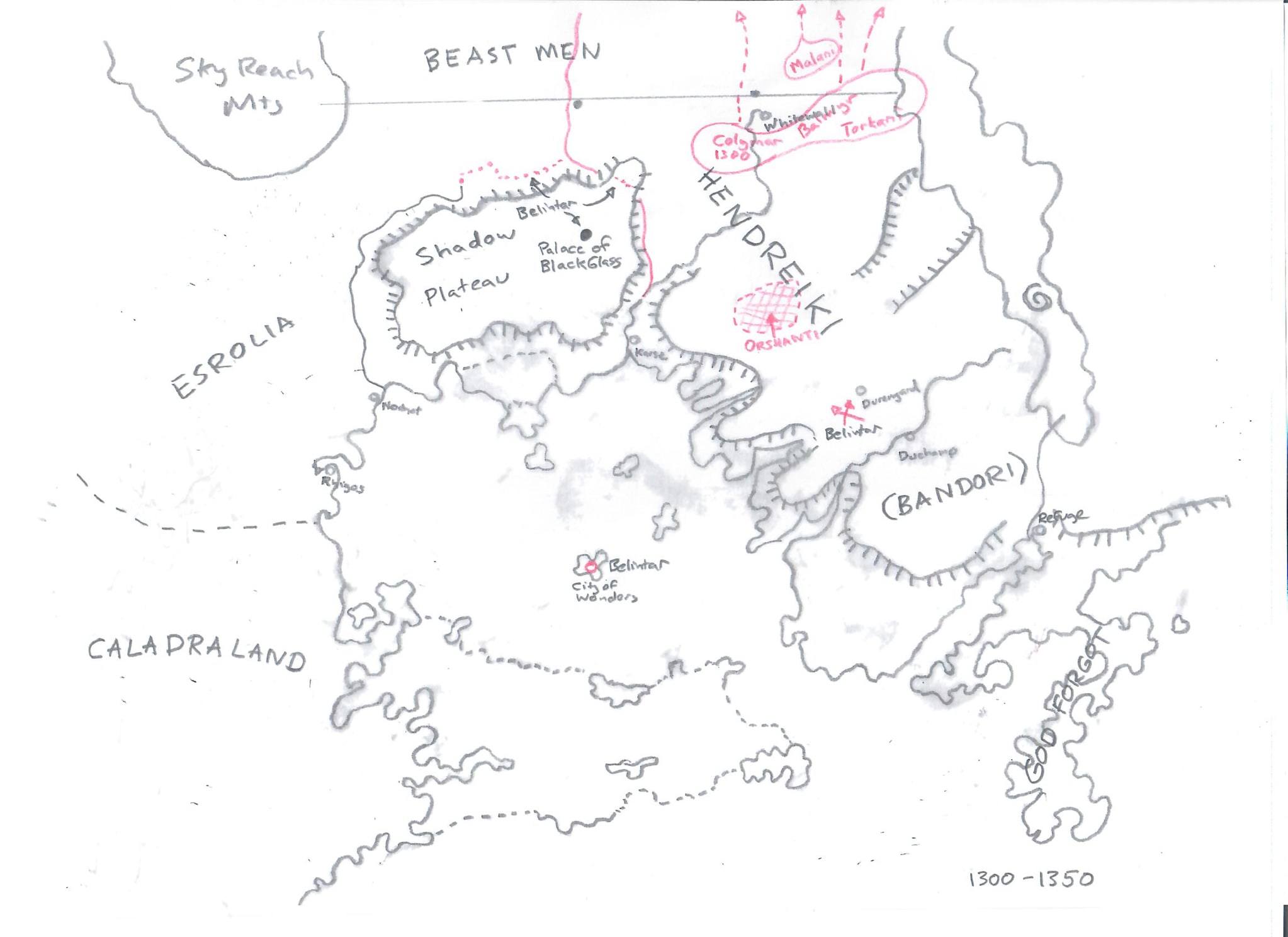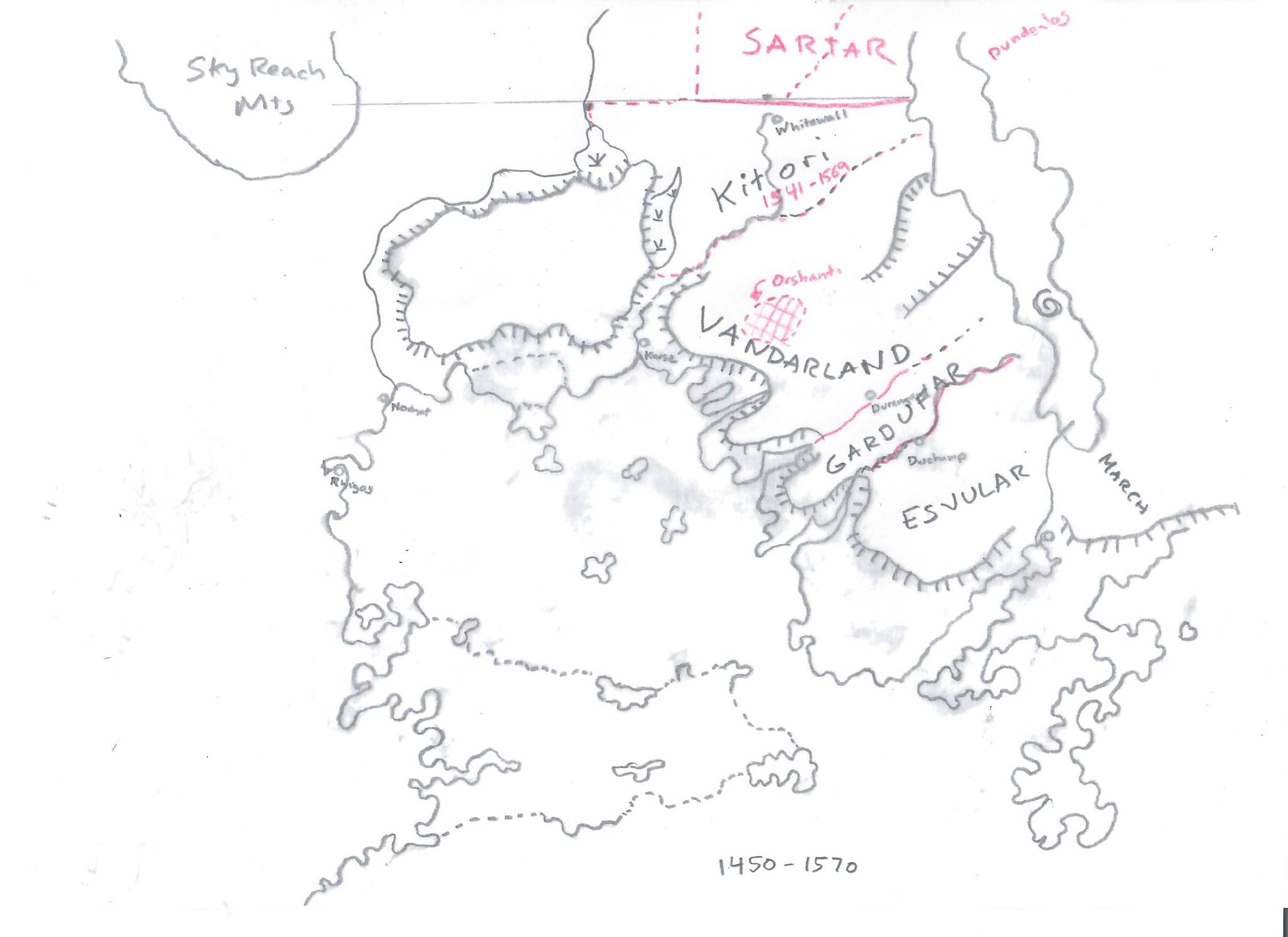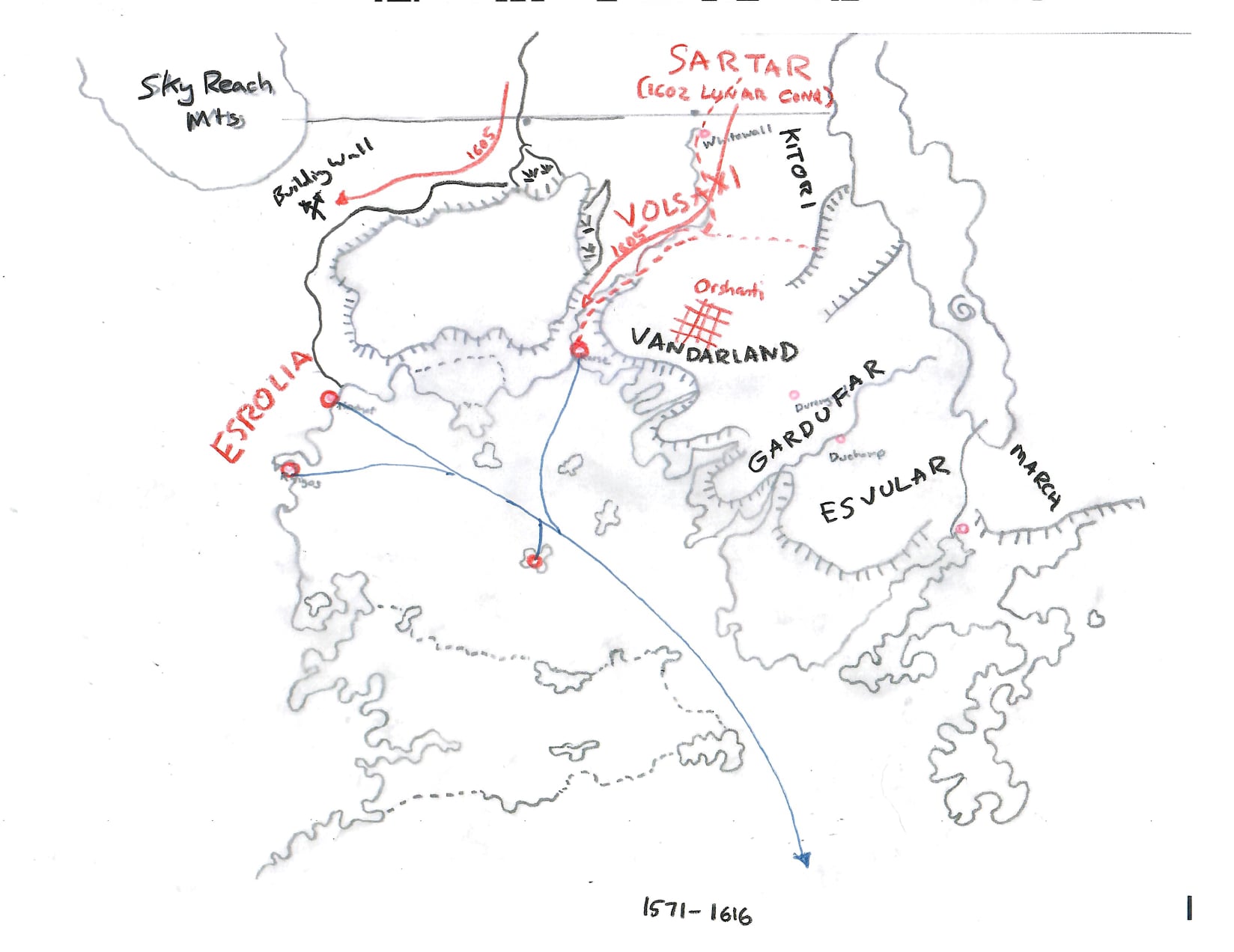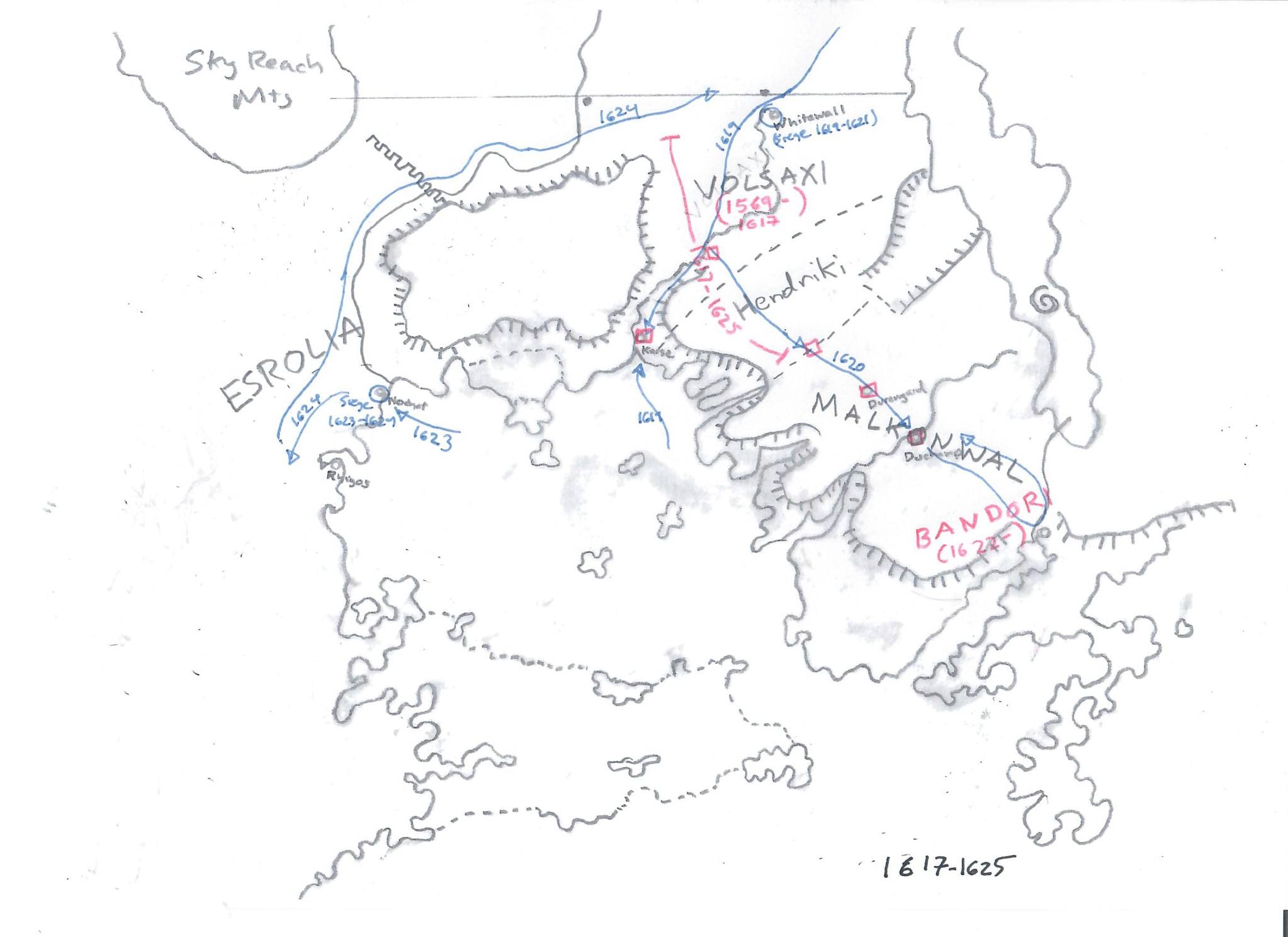This is a series of maps Greg and I drew some years ago to visualize the changes in Heortland from the arrival of Belintar to the present day. One thing that is clear from this series of maps is that Volsaxar and Vandarland are going to have lots of ties and influences to Sartar. Marriages, shared cult, language, and culture, and trade are going to mean that the people of northern Heortland are virtually indistinguishable from Sartarites.
And yet, Belintar is the beloved God-King here because he brought the God Realm into proximity of the mundane world. Heortland is part of the Holy Country, while Sartar is carved out of the wilderness.
At the southern tip of Heortland, we have the Aeolians of Esvular, who are clearly influenced by both the Orlanthi and the Malkioni of God Forgot.
Meanwhile in central Heortland many customs such as a mounted elite warriors that are selected from aristocratic families and their status approved in assemblies, are clearly influenced by the Malkioni, while at the same time the culture is very similarly to the Sartarites. These mounted elite warriors supported Rikard the Tiger-Hearted’s short lived kingdom (1618-1620) and now many serve as mercenaries.





See Also
![]()
![]()
So as of late 1625 Heortland is a mess. The Volsaxi and Hendriki are leaderless and look increasingly to the new Prince of Sartar for direction. Gardufar (the former Malkonwal) is leaderless and dealing with Chaotic outbreaks from the Print. And most of the Aeolians are now loosely organised as the Bandori centered on Refuge.
Following the sacking of the City of Wonders, the Wolf Pirates add to the disorder, with many raids plundering whatever they feel like.
Whenever we think about Heortland it is important to always remember how closely linked it is to Sartar by kinship, language, cult, and trade.
Heortland is the term used to describe the Sixth of the Holy Country that includes the lands between the Shadow Plateau and the Storm Mountains and between the Crossline to the Leftarm Islands. It is a geographic and sometimes administrative label.The Hendriki were a tribal group powerful in the Second and early Third Age.
The Hendriki are a tribe or group of tribes (that changes over the centuries) that date to the late First Age/early Second Age. Whitewall was an important magical centre for them. After nearly 900 years they had accumulated much magical power and traditions of independence but were defeated and their magic broken by Belintar. Their symbols of power were hidden behind guardians, etc.The Volsaxi are a tribal group around Whitewall. They formed during a rebellion (Orlanthi do that a lot) but were eventually defeated by the Kitori. The Kitori were defeated by Tarkalor and his Yelmalion allies and the Volsaxi reformed.
After Belintar disappeared, the king of the Volsaxi was able to regain the symbols of the Hendriki and proclaimed himself the king of that ancient group.About the same time a Seshnegi adventurer proclaimed himself the king of Malkonwal in central and southern Heortland. Think of this as the sort of stuff that happens when an old polity disintegrates (Spanish Americas after 1808, Austra-Hungary in 1918, Soviet Union in 1991, Yugoslavia 1992, etc).
